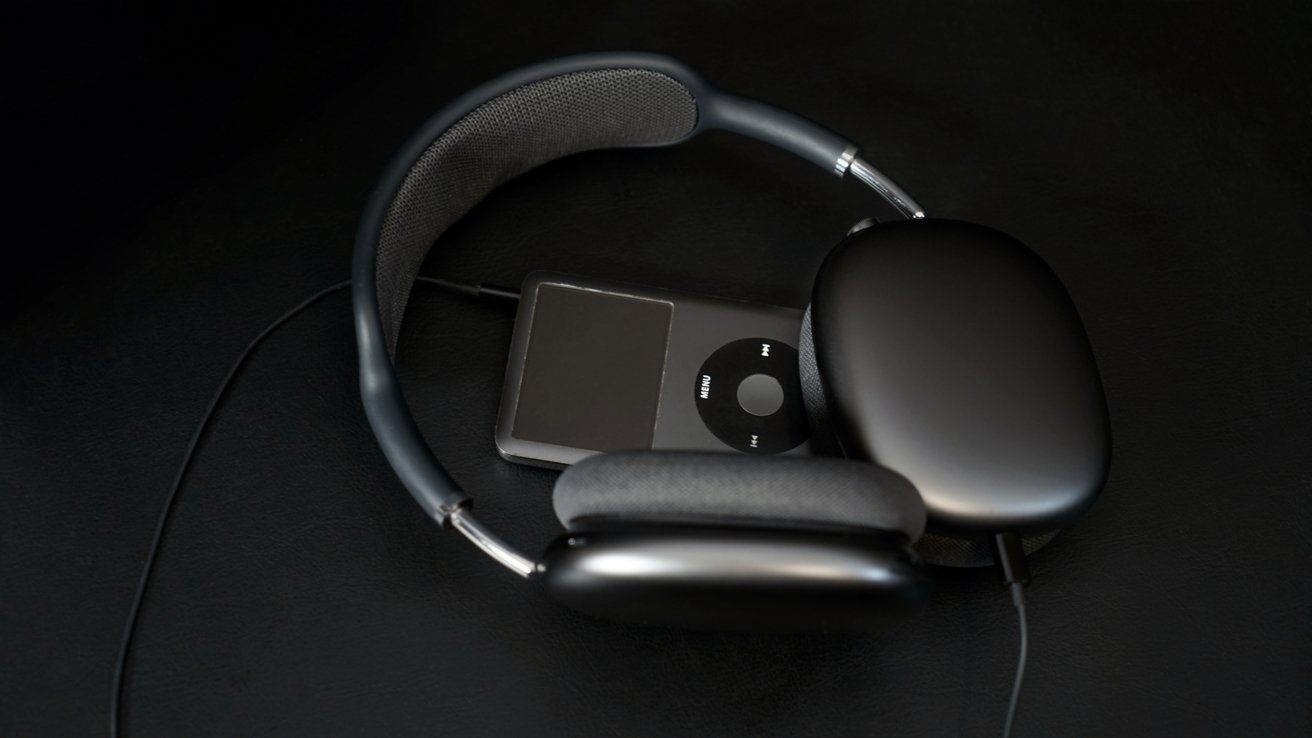Apple finally brings lossless audio and low-latency audio to AirPods Max
Owners of the AirPods Max will soon be able to enjoy lossless audio and low-latency audio with their headphones, enhancing the premium headphones' capabilities.

AirPods Max with an iPod
Apple's audio hardware offers various features to enhance the musical and theatrical experience, but there are feature blindspots. In an inbound software update for the AirPods Max, the premium headphones will gain two missing functions.
Confirmed by Apple in Monday, an update for USB-C AirPods Max in April will add support for both lossless audio and ultra-low latency audio.
For the update, the lossless audio addition will enable 24-bit, 48kHz support, which Apple says preserves "the integrity of original recordings" on many Apple Music tracks. The support also extends to Personalized Spatial Audio.
While you could connect the AirPods Max to an analog source, which could be lossless in its own right, the analog-to-digital conversion via the cable didn't result in lossless playback. However, according to Apple's announcement, using the USB-C to 3.5mm audio cable or a USB-C to USB-C cable will enable support.
Consequently, the update will mean the AirPods max will be the only headphones to allow musicians to create and mix with Personalized Spatial Audio with head tracking, in Apple's opinion.
The change won't just affect lossless audio support, as the AirPods Max will also get ultra-low latency audio. The feature lowers the lag time between audio playing on a connected device and it being played and heard through the AirPods Max into the user's ears.
Apple claims the reduction, which benefits gamers and livestreamers, is on par with native built-in speakers on a Mac, iPhone, or iPad.
The update will be included as part of the update to iOS 18.4, iPadOS 18.4 and macOS Sequoia 15.4.
At the same time, the announcement says there will be a USB-C to 3.5mm audio cable available to purchase from Apple's online store, priced at $39. This is different from the USB-C to 3.5mm Headphone Jack Adapter, which is already being sold for $9.
Read on AppleInsider


Comments
Hopefully this will fix the latency issues when using MIDI on the Mac. It is horrible on the AirPods Max and if you use a set of HomePods as speakers for your Mac.
Probably due to Max running Bluetooth 5.0 and Apple having decided to not compete with aptX-Lossless. Back in 2022 there was an article on how Apple would win but we're still at BT5.0 and AAC making aptX-Lossless the best wireless:
https://www.whathifi.com/features/i-tried-aptx-lossless-bluetooth-and-yes-we-can-all-look-forward-to-it-with-caution
If anyone has a technical explanation for why the difference in connectors should matter--when the internal hardware of both APMs is supposedly identical--please post!
Is the author disputing this claim? If so, I think additional information contradicting it would be in order. If not, it seems a bit odd to include the bolded phrase.